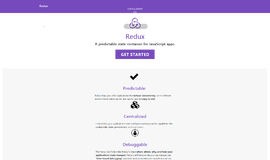Introduction to Spring Framework
In this tutorial, we will study the most popular Java based web framework, Spring.
Spring framework is an open source Java platform that provides MVC infrastructure support for developing robust Java applications very easily and very rapidly using the recommended MVC pattern.
The core features of the Spring Framework can be used in developing any Java application, but there are extensions for building web applications on top of the Java EE platform. Spring framework targets to make J2EE development easier to use and promotes good programming practice by enabling a POJO-based programming model.
Advantages of Spring framework:
To start, let’s have a look at the benefits Spring framework offers us:
- Spring enables us to develop enterprise-level applications using POJOs. The benefit of using only POJOs is that we do not need an EJB container product such as an application server, but you have the option of using only a robust servlet container such as Tomcat or some commercial product.
- Spring is organized in a modular fashion. Even though the number of packages and classes are substantial, you only have to worry about the ones you need and can ignore the rest.
- Spring does not reinvent the wheel. Instead, it truly makes use of some of the existing technologies like several ORM frameworks, logging frameworks, JEE, Quartz and JDK timers, and other view technologies.
- Testing an application written with Spring is simple because environment-dependent code is moved into the framework. Furthermore, by using JavaBean-style POJOs, it becomes easier to use dependency injection for injecting test data.
- Spring's web framework is a well-designed web MVC framework, which provides a great alternative to web frameworks such as Struts or other over engineered or less popular web frameworks.
- Spring provides a convenient API to translate technology-specific exceptions (thrown by JDBC, Hibernate, or JDO, for example) into consistent, unchecked exceptions.
- Lightweight IoC containers tend to be lightweight, especially when compared to EJB containers, for example. This is beneficial for developing and deploying applications on computers with limited memory and CPU resources.
- Spring provides a consistent transaction management interface that can scale down to a local transaction (using a single database, for example) and scale up to global transactions (using JTA, for example).
Dependency Injection (DI):
When writing a complex Java application, application classes should be as independent as possible from other Java classes to increase the possibility to reuse these classes and to test them independently of other classes while doing unit testing. Dependency Injection helps in gluing these classes together while at the same time keeping them independent.
What is dependency injection exactly? Let's look at these two words separately. Here the dependency part translates into an association between two classes. For example, class A is dependent on class B. Now, let's look at the second part, injection. All this means is that class B will get injected into class A by the IoC.
There are three ways to inject dependencies as a bean. They are:
- Field Injection
- Constructor Injection
- Setter Injection
We will study that why constructor inject is the most recommended one, despite field injection being the easiest.
Aspect Oriented Programming (AOP):
One of the key components of Spring is the Aspect oriented programming (AOP) framework. The functions that span multiple points of an application are called cross-cutting concerns and these cross-cutting concerns are conceptually separate from the application's business logic. There are various common good examples of aspects including logging, declarative transactions, security, and caching etc.
The key unit of modularity in OOP is the class, whereas in AOP the unit of modularity is the aspect. Whereas DI helps you decouple your application objects from each other, AOP helps you decouple cross-cutting concerns from the objects that they affect.
The AOP module of Spring Framework provides aspect-oriented programming implementation allowing you to define method-interceptors and pointcuts to cleanly decouple code that implements functionality that should be separated.
AOP Terminology
AOP is a big concept to handle, so, let us move forward by defining terms specific to Aspect oriented programming in Spring Framework.
- Aspect: a modularization of a concern that cuts across multiple classes. Transaction management is a good example of a crosscutting concern in enterprise Java applications. In Spring AOP, aspects are implemented using regular classes or regular classes annotated with the @Aspect annotation (the @AspectJ style).
- Join point: a point during the execution of a program, such as the execution of a method or the handling of an exception. In Spring AOP, a join point always represents a method execution.
- Advice: action taken by an aspect at a particular join point. Different types of advice include "around," "before" and "after" advice. (Advice types are discussed below.) Many AOP frameworks, including Spring, model an advice as an interceptor, maintaining a chain of interceptors around the join point.
- Pointcut: a predicate that matches join points. Advice is associated with a pointcut expression and runs at any join point matched by the pointcut (for example, the execution of a method with a certain name). The concept of join points as matched by pointcut expressions is central to AOP, and Spring uses the AspectJ pointcut expression language by default.
- Introduction: declaring additional methods or fields on behalf of a type. Spring AOP allows you to introduce new interfaces (and a corresponding implementation) to any advised object. For example, you could use an introduction to make a bean implement an IsModified interface, to simplify caching. (An introduction is known as an inter-type declaration in the AspectJ community.)
- Target object: object being advised by one or more aspects. Also referred to as the advised object. Since Spring AOP is implemented using runtime proxies, this object will always be a proxied object.
- AOP proxy: an object created by the AOP framework in order to implement the aspect contracts (advise method executions and so on). In the Spring Framework, an AOP proxy will be a JDK dynamic proxy or a CGLIB proxy.
- Weaving: linking aspects with other application types or objects to create an advised object. This can be done at compile time (using the AspectJ compiler, for example), load time, or at runtime. Spring AOP, like other pure Java AOP frameworks, performs weaving at runtime.
Types of Advice
- Before advice: Advice that executes before a join point, but which does not have the ability to prevent execution flow proceeding to the join point (unless it throws an exception).
- After returning advice: Advice to be executed after a join point completes normally: for example, if a method returns without throwing an exception.
- After throwing advice: Advice to be executed if a method exits by throwing an exception.
- After (finally) advice: Advice to be executed regardless of the means by which a join point exits (normal or exceptional return).
- Around advice: Advice that surrounds a join point such as a method invocation. This is the most powerful kind of advice. Around advice can perform custom behavior before and after the method invocation. It is also responsible for choosing whether to proceed to the join point or to shortcut the advised method execution by returning its own return value or throwing an exception.
Around advice is the most general kind of advice. Since Spring AOP, like AspectJ, provides a full range of advice types, we recommend that you use the least powerful advice type that can implement the required behavior.
For example, if we need only to update a cache with the return value of a method, we will better be off implementing an after returning advice than an around advice, although an around advice can accomplish the same thing. Using the most specific advice type provides a simpler programming model with less potential for errors. For example, we do not need to invoke the proceed() method on the JoinPoint used for around advice, and hence cannot fail to invoke it.
Conclusion
In this article, we looked at some core concepts in Spring framework like Dependency Injection, Aspect of Control and grasped the terminology needed to help us move forward.
Continue to part 2 - getting started and create your first app
Recent Stories
Top DiscoverSDK Experts


Compare Products
Select up to three two products to compare by clicking on the compare icon () of each product.
{{compareToolModel.Error}}

















{{CommentsModel.TotalCount}} Comments
Your Comment